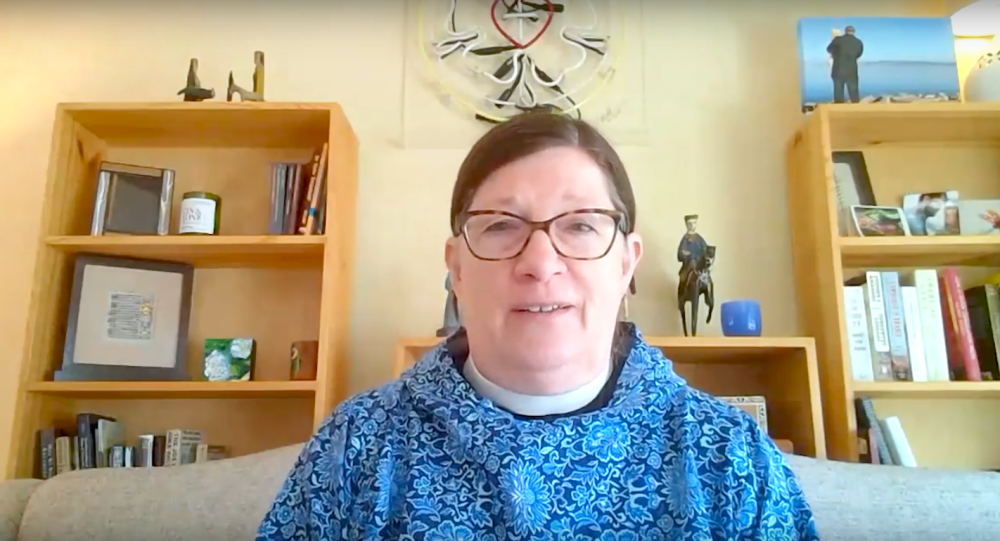ELCA presiding bishop’s neon sign goes viral

As churches closed to slow the spread of COVID-19, Elizabeth Eaton, the presiding bishop of the Evangelical Lutheran Church in America, began offering weekly video messages from her home.
But viewers were captivated by more than her words of comfort or calls for prayer and action to address issues like systemic racism. On the wall behind her was a neon sign in the shape of the Luther rose—a coat of arms Martin Luther designed more than 500 years ago for the Protestant Reformation he ignited.
Almost immediately, the sign became a focus that generated nearly as many comments from those tuning in as Eaton’s messages.




